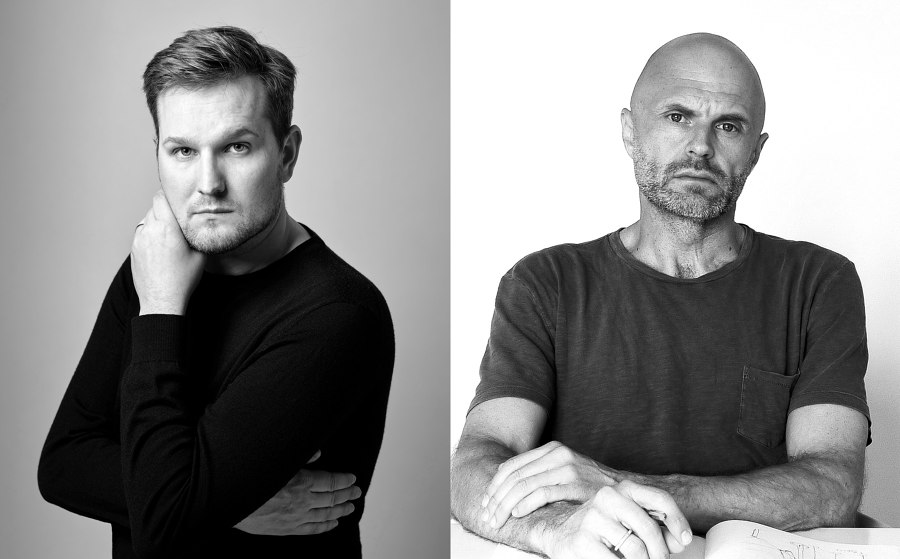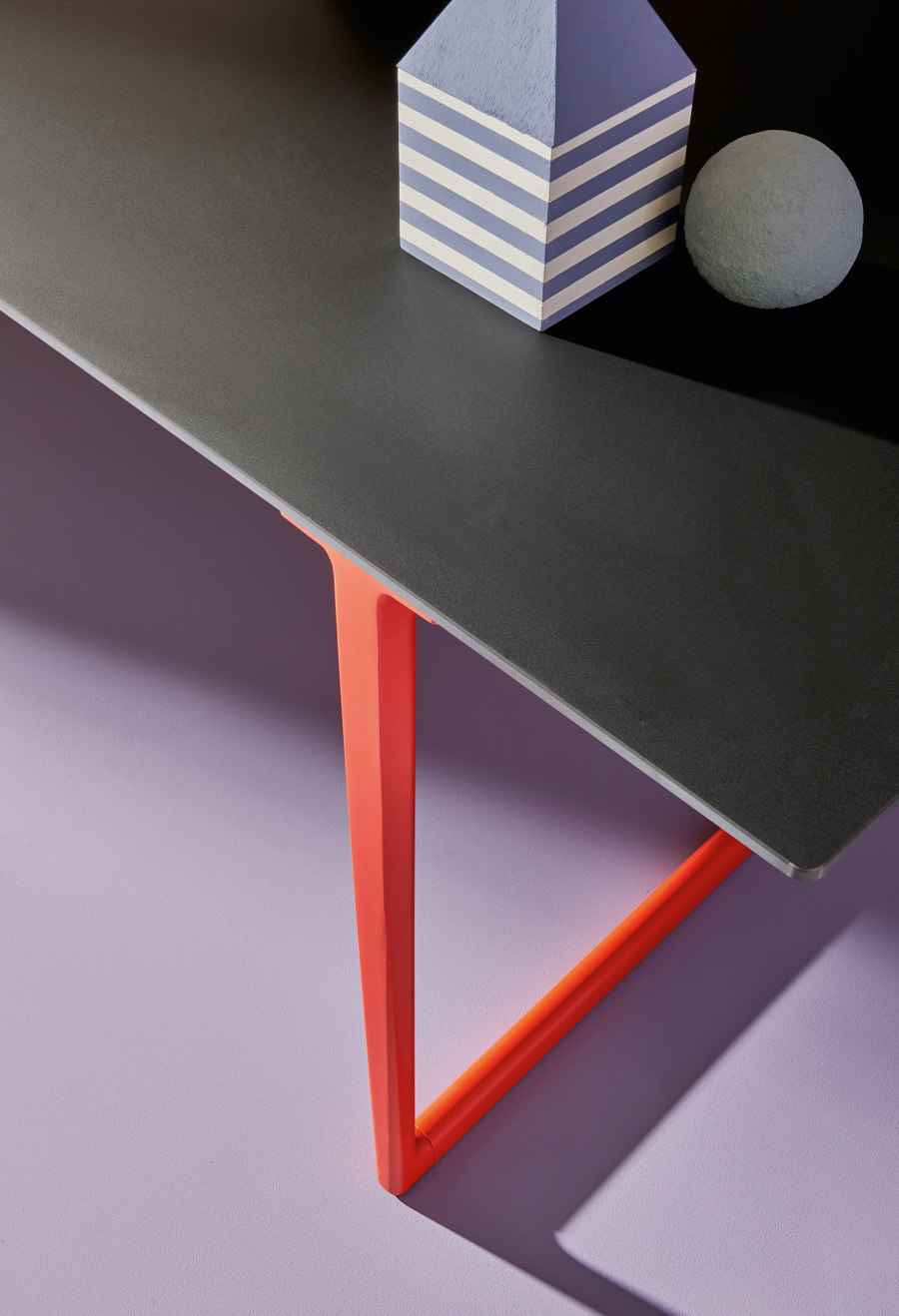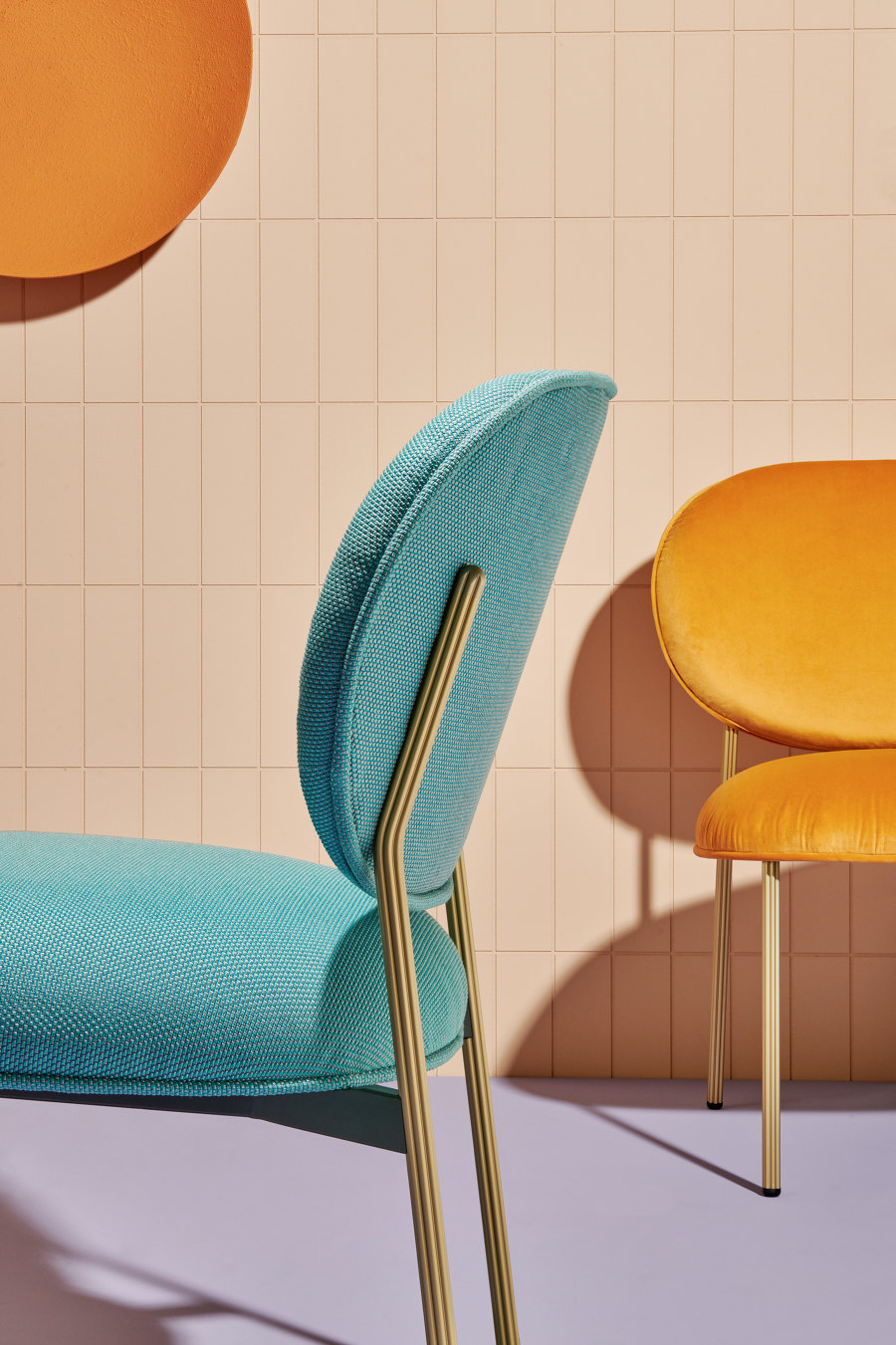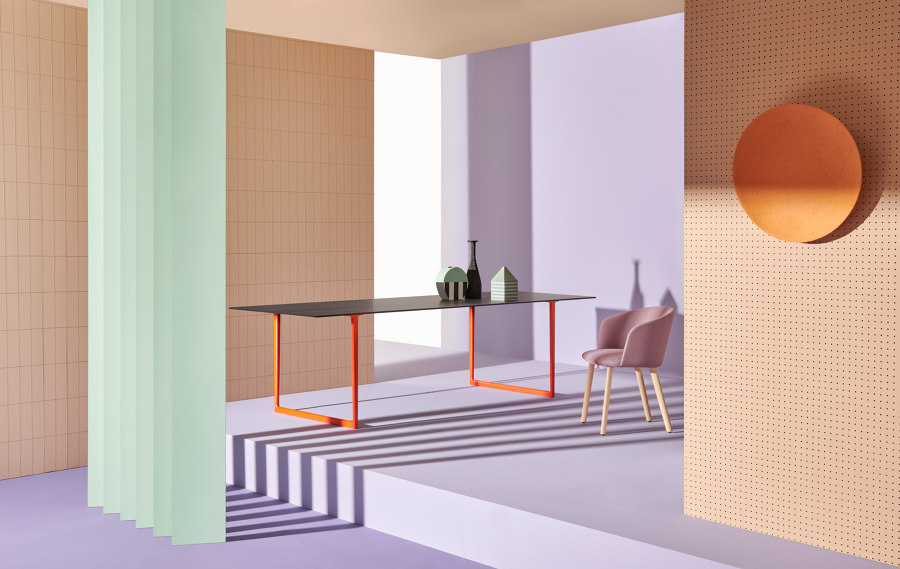The new crew: Pedrali
Brand story by Simon Keane-Cowell
MORNICO AL SERIO (BG), Italy
07.07.20
Challenging times call for a different perspective. PEDRALI delivers new ideas via new collaborations with Sebastian Herkner and Robin Rizzini.
2019 Designer of the Year Sebastian Herker (left) and Robin Rizzini, chief designer at Milan-based studio Metrica, marry their creative talent with Pedrali’s problem-solving expertise in their first collaborations with the premium furniture brand

2019 Designer of the Year Sebastian Herker (left) and Robin Rizzini, chief designer at Milan-based studio Metrica, marry their creative talent with Pedrali’s problem-solving expertise in their first collaborations with the premium furniture brand
×Adapt or die. I always found this expression rather dramatic. Somewhat over the top. But it makes sense, I guess, in the context of evolutionary history. And it certainly makes sense in pandemic times when it comes to business.
There are very few industries that remain unaffected by the Covid crisis. The extremely lucky ones, of course, have actually benefited from the wholesale shifts in societal behaviour that we've witnessed over the past few months. As we learn to live with the crisis, we come to realise that it won't necessarily be business as usual. Agility, innovation, creativity and quality will be among the deciding factors as to which companies stay the new pace.
Pedrali's latest collection, 'New Ideas 2020', foregrounds the timely idea of versatility and flexibility, against a rapidly changing landscape in terms of how we live, work and socialise. Shown here: Sebastian Herkner’s Blume family

Pedrali's latest collection, 'New Ideas 2020', foregrounds the timely idea of versatility and flexibility, against a rapidly changing landscape in terms of how we live, work and socialise. Shown here: Sebastian Herkner’s Blume family
×Italian furniture manufacturer Pedrali is most definitely putting its best foot forward. Its years of strategic investment in state-of-the-art manufacturing technology, optimised processes and secure supply chains positions it well to keep doing what it does best – supplying architects and other professional specifiers with aesthetically confident products that are strong on comfort, well-being and sustainability. And, importantly, doing this at scale.
This is, of course, only one part of the formula. A raft of creative partnerships with some of the best designers out there have helped author a portfolio of products that, while contemporary, eschew the ephemerality of trends.
Pedrali's new collection for this year – launched under the title of 'New Ideas 2020' – places an emphasis on the exceedingly timely idea of versatility, with a range of friendly designs that are equally at home in contract and, well, home spaces. It also ushers in two new collaborations – with German-born, 2019 Designer of the Year Sebastian Herkner, known for a body of work that displays a deep understanding of materials and a strong sense of craftsmanship; and with Anglo-Italian designer Robin Rizzini, former design chief at Milan-based studio Metrica, whose concerns include material reduction and innovative processes.
Robin Rizzini’s new Toa table for Pedrali features tapered, die-cast aluminium legs to create a materially minimal design with an ultra-graphic look

Robin Rizzini’s new Toa table for Pedrali features tapered, die-cast aluminium legs to create a materially minimal design with an ultra-graphic look
×Herkner has developed the Blume family of upholstered seating and coffee tables, which deploy extruded aluminium to create organically shaped forms that promise a high degree of comfort. Rizzini, meanwhile, has used solid, die-cast aluminium to create Toa – a super-rational table that manages to unite the quasi-industrial and a sense of the decorative in a single aesthetic.
I posed the two newcomers to the Pedrali design stable the same set of five questions to see how their thinking converges and differs, one of them being the ever-important invitation to explain what their latest designs actually bring to the table. (No pun intended.)
SEBASTIAN HERKNER
01
Architonic: How did your collaboration with Pedrali come about?
Sebastian Herkner: I’ve known Monica and Giuseppe Pedrali for some time and last year I had time to visit them at their headquarters, which was a very impressive moment. It’s one of the Italian companies producing in-house that has a huge passion and vision for production, quality and hospitality design.
02
AT: What are the most important criteria for you when deciding which manufacturers to work with?
SH: This time it was a very personal decision. Pedrali is still a family-run furniture manufacturer; Monica and Giuseppe are very down to earth and gave me the freedom to design something truly unique for them.
03
AT: What were you hoping to achieve in developing your Blume family of seating and coffee tables? What do they offer that's specific or new?
SH: The collection was driven by the idea to make a comfortable and elegant chair for restaurants and lounges. I wanted to create beautiful legs, something you would want to touch that’s not just about function. So, I came up with a flower-like shape made of extruded aluminium. This technique allows you to anodise the surface in several metallic finishes, giving the chair a subtle elegance. The seating and back elements are cozy, and finished with a fine piping, incorporating the waves of the legs.
04
AT: And what did you learn from the development process?
SH: It was an intensive dialogue with the Pedrali team. There’s always something to learn from a project like this. The engineers did an amazing job, and found a fantastic solution to fix the backrest invisibly to the extruded leg.
'I wanted to create beautiful legs, something you would want to touch that’s not just about function'
05
AT: And, finally: what have you learnt about yourself in the past few months, as a creative, during the lockdown?
SH: Working for a considerable amount of time at home was a challenge at the beginning, but in the end went very well. I think Zoom meetings and so on can be productive; they allow to keep your projects moving forward. That said, I love to travel and visit workshops. I did, on the other hand, really enjoy spending more time with my partner, without the usual stress of packing and unpacking my case three times a week.
ROBIN RIZZINI
01
Architonic: How did your collaboration with Pedrali come about?
RR: I'd been in contact with Giuseppe Pedrali for many years, and we both felt a solid, mutual respect for, and interest in, each other. But, for different reasons, the moment had never been right to start a collaboration. Sometimes you need the right combination of timing and personal situation. But this time everything aligned.
02
AT: What are the most important criteria for you when deciding which manufacturers to work with?
RR: I’m not sure I would say there are exact criteria. I don’t have prejudices towards companies; as long as I feel in the right place with the people I’m going to work with and the company has a strong inclination towards quality and design, anything is possible. The case with Pedrali is particular, as we had enough time to study each other and build a good relationship before starting to work together.
03
AT: What were you hoping to achieve in developing your Toa table? What does it offer that's specific or new?
RR: I managed to achieve something that, for me, is quite rare. The table came out exactly as I was hoping. It’s visually light and structurally sound. Technically well-developed. It’s modular and has pleasant proportions in big and small configurations. I guess it offers what a table has to offer today: flexibility in size and a choice of materials for the top surface. Something that today, in light of what is happening globally, is quite relevant, I think.
04
AT: And what did you learn from the development process?
RR: Two things: Pedrali is a very efficient and competent company. On a more personal note, I’ve added some additional technical knowledge in the world of die-cast aluminium. I think it’s important to be able to learn something from the companies you work with and to bring your experience to them. It’s a mutual exchange that makes the relationship more fruitful and it’s beneficial to the product.
'I think it’s important to be able to learn something from the companies you work with and to bring your experience to them'
05
AT: And, finally: what have you learnt about yourself in the past few months, as a creative, during the lockdown?
RR: One: that human beings are very quick to adapt to extreme situations. And two: that it’s almost impossible to work with kids around.
…
Portrait Sebastian Herkner: Gaby Gerster; all other images: courtesy Pedrali
© Architonic











